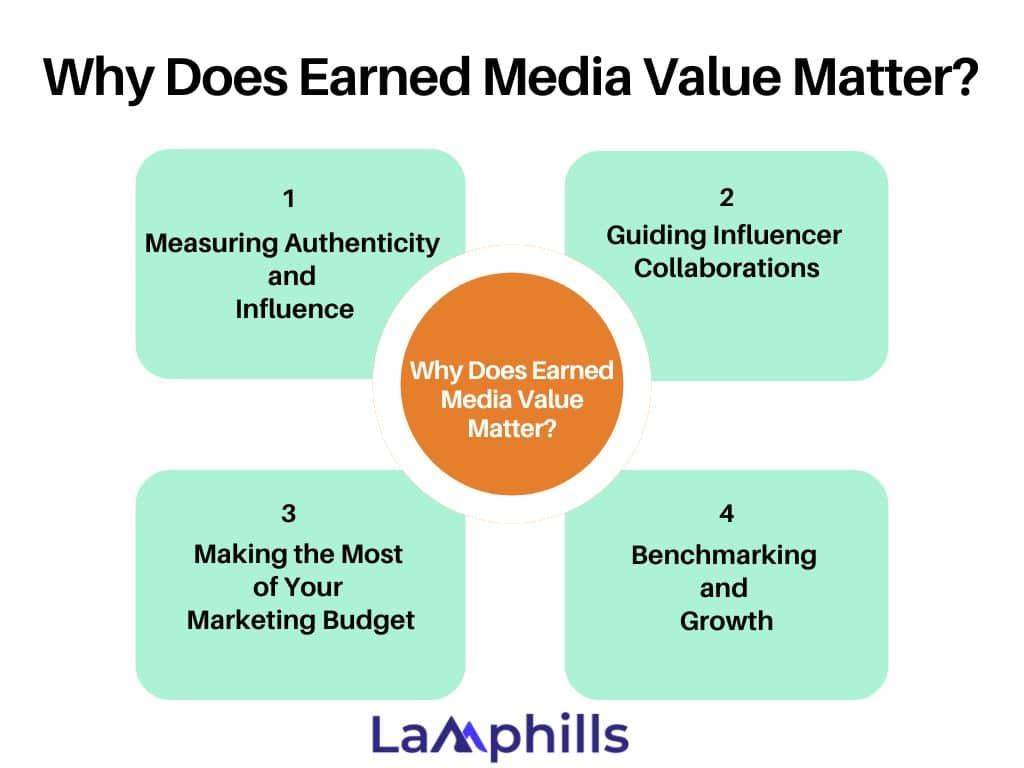Imagine launching a campaign, but instead of spending big bucks on ads, you watch your brand naturally pop up across social media, blogs, and even in the press. It sounds almost magical, doesn’t it? That’s the beauty of Earned Media Value (EMV). It’s a metric that can reveal how powerful your marketing efforts are—without draining your budget.
In a world where 92% of consumers trust earned media—like word-of-mouth and recommendations—over traditional ads, understanding EMV isn’t just beneficial; it’s necessary. As the legendary marketer David Ogilvy once said, “The best ideas come as jokes. Make your thinking as funny as possible.” In other words, when your brand naturally sparks conversations, it’s more powerful than well-crafted ad campaigns.
But how do you quantify the value of something you didn’t directly pay for? How do you put a dollar amount on the organic buzz your brand generates? That’s where EMV comes into play. In this article, I’ll share insights from my years in digital marketing on why EMV matters and how you can calculate it to ensure your brand maximizes its potential.
Key Points
- Earned Media Value (EMV) is all about the buzz your brand gets without you paying for it.
- EMV is important because it measures your PR impact, ROI, and benchmarking. Brands can also use it to make informed decisions about resource allocation and prioritize efforts that generate the most value.
- Some of the challenges in calculating EMV include subjectivity in valuation, quality vs. quantity, and evolving media landscape.
- One of the benefits of earned media value (EMV) is that you can benchmark your performance against industry standards and competitors.
What is Earned Media Value (EMV)?
Earned Media Value (EMV) is all about the buzz your brand gets without you paying for it. It’s like when people talk about your product in a viral tweet or write about it on their blog. That’s earned media. Unlike paid ads, where you’re shelling out cash to get noticed, earned media is what happens when your brand creates enough interest that people want to share it on their own.
I remember working with a small startup that didn’t have much to spend on ads. Instead of blowing our budget, we focused on creating content that people couldn’t help but share. We also built some great relationships with influencers who genuinely loved our product. The result? We pulled in over $200,000 in earned media value in just six months—without spending a dime on advertising.
Understanding Earned Media Value
If a top-tier influencer mentions your brand on Instagram, reaching 500,000 followers without any financial compensation, how much would you have had to pay for that same exposure through a sponsored post? Earned media value (EMV) answers this by assigning a dollar value to such organic mentions, helping you measure the impact of your unpaid media coverage.
Is Earned Media the Most Valuable?
Earned media is often considered highly valuable due to its authenticity and credibility. Unlike paid media, which is purchased, earned media is gained through merit—such as positive press coverage, social media mentions, or user-generated content.
Why Does Earned Media Value Matter?

As marketing budgets tighten and the competition for consumer attention intensifies, understanding the full impact of your efforts is more important than ever. The following are some of the reasons why tracking earned media value (EMV) matters:
#1. Measuring Authenticity and Influence
One of the things I consider as a digital marketer when designing marketing campaigns is authenticity. Authentic brands will always win over time. People today can sniff out an ad from a mile away. And they don’t always trust it. According to the 2023 Edelman Trust Barometer, 81% of consumers say trust is a must before they’ll buy from a brand. That’s where earned media shines. It’s not paid for—it’s something you’ve earned through genuine connections. EMV helps you put a number on this kind of authenticity.
#2. Making the Most of Your Marketing Budget
Here’s something I’ve learned: Not all marketing dollars are spent equally. After running a $20,000 digital ad campaign, we discovered our earned media value was almost double that amount. That wasn’t just a nice surprise—it was a sign that we needed to rethink how we were spending our money. By looking at EMV alongside our paid media spend, we were able to put our budget where it really made a difference.
#3. Guiding Influencer Collaborations
Influencer marketing is a powerful tool, but it’s not just about paying someone to promote your product. It’s about building relationships with influencers whose audiences trust them. Through tracking EMV, I’ve been able to spot the influencers who genuinely drive results and build relationships with them, rather than just paying for posts that don’t really move the needle.
#4. Benchmarking and Growth
As you track earned media value (EMV) over time, you can benchmark your performance against industry standards and competitors. This ongoing measurement allows you to identify trends and recognize successful strategies. You can also adapt to changing consumer behaviors, keeping your brand relevant and ahead of the curve.
One of the best things about EMV is that it helps you see your progress over time. For example, one of the recent project I worked on recorded a 30% boost in our EMV within a year. We didn’t just get lucky—we adjusted our strategies based on what our EMV revealed and saw real growth.
Read Also: The Ultimate Guide to Competitor Benchmarking
Lamphills’ Earned Media Value Benchmarking Checklist
This checklist helps you assess and compare your Earned Media Value (EMV) against industry
standards set realistic goals, and measure progress over time to optimize your marketing
strategies.
Download Lamphills’ Earned Media Value Benchmarking Checklist
How to Calculate Earned Media Value
I know calculating EMV can seem a bit overwhelming, but it doesn’t have to be. The following are simple ways to do it:
#1. Track Earned Media Mentions
To calculate your earned media value, identify your brand’s organic mentions. This could be social media posts, blog articles, reviews, or any other form of unpaid publicity. I use tools like Mention, Google Alerts, and Brand24 for this.
#2. Assign a Monetary Value
Once you’ve compiled your earned media mentions, assign a monetary value to each one. For example, if a blog post about your product is shared 1,000 times, estimate how much it would cost to reach that audience through paid ads. According to a 2023 report by Hootsuite, the average cost per thousand impressions (CPM) for social media ads is around $7.19, which can serve as a baseline for your calculations.
#3. Calculate Total EMV
Sum the values assigned to each mention to get your total EMV. This number represents the overall worth of your brand’s organic exposure.
#4. Consider Engagement
Adjust your EMV calculation based on engagement levels. For instance, a social media post with high engagement (likes, shares, and comments) is more valuable than one with low interaction. A study by Sprout Social in 2023 found that posts with high engagement can generate up to three times more value in brand visibility than those with minimal engagement.
Other Earned Media Value Formula
The following are other ways of calculating your earned media value:
- Impressions x CPM: Multiply earned media impressions by a CPM (cost per thousand impressions).
- Ayzenberg index: Assign a market value to your media metric and multiply by the volume of KPIs obtained.
- EMV = (Total Impressions × Ad Rate) – Cost of PR Efforts
How Important Is EMV?
Earned Media Value (EMV) is important because it measures your PR impact, ROI, and benchmarking. Brands can also use it to make informed decisions about resource allocation and prioritize efforts that generate the most value.
Challenges and Considerations in Calculating EMV
EMV is super useful, but it’s not perfect. It’s important to approach it with a clear understanding of its limitations. The following are a few things to watch out for:
#1. Subjectivity in Valuation
The value you assign to organic mentions can vary greatly depending on your methodology. What one brand might value at $1,000, another might estimate at $500. As a result, consistency in your approach is key to making EMV a reliable metric.
#2. Quality vs. Quantity
A high EMV doesn’t always mean good exposure. For example, I once worked with a brand that went viral for the wrong reasons. A tweet got misinterpreted, leading to a flood of negative press. While our EMV was high, it wasn’t the kind of exposure we wanted. So, ensure you’re looking at both the quality and quantity of your earned media.
#3. Evolving Media Landscape
The way people consume media is constantly evolving, and your EMV calculations should adapt, too. New platforms and formats pop up all the time, so be sure your approach stays relevant.
Role of Public Relations in Enhancing Earned Media Value
Public relations (PR) is about strategically positioning your brand in a way that naturally attracts attention and fosters credibility. When done effectively, PR can significantly enhance your Earned Media Value (EMV). It can also increase organic mentions, shares, and discussions that money simply can’t buy.
How Does PR Boost Earned Media Value?
PR boosts EMV in the following ways:
- Building Credibility
- Media Coverage
- Crisis Management
- Storytelling
- Event Management
Strategies to Enhance Earned Media Through PR
The following are some strategies I’ve found effective for boosting earned media through PR:
#1. Leverage Press Releases
A well-crafted press release can be a powerful tool in your PR arsenal. Ensure your press releases are newsworthy, concise, and tailored to the interests of the media outlets you’re targeting. A press release that captures the attention of a major publication can lead to widespread coverage, enhancing your earned media.
#2. Create Shareable Content
Work with your PR team to create content that’s not only informative but also shareable. Things like infographics, videos, and compelling articles are more likely to be picked up by media outlets and shared on social platforms, expanding your reach and increasing your EMV.
#3. Monitor and Respond to Media Mentions
Actively monitor your brand’s media mentions and respond when appropriate. Engaging with positive coverage and addressing negative press can help manage your brand’s image and encourage more organic discussions. This proactive approach can turn a single mention into a broader conversation, increasing your EMV.
#4. Cultivate Relationships with Journalists and Influencers
Building and maintaining strong relationships with key journalists and influencers in your industry is essential. You can provide them with valuable content, exclusive stories, or early access to products. You can also encourage them to cover your brand, it’ll lead to more organic mentions and higher EMV.
Is Earned Media Value Real Money?
Earned Media Value isn’t actual cash, but it’s a great way to see the financial impact of the exposure your brand gets organically. It helps you understand the value of all those mentions, shares, and media coverage, giving you a clearer picture of your marketing ROI.
What Does EMV Mean in Marketing?
Earned Media Value (EMV) refers to the estimated monetary value of earned media exposure. It quantifies the worth of organic mentions, shares, and media coverage that a brand receives without directly paying for it. EMV helps marketers understand the impact of their PR and social media efforts by translating the value of earned media into a comparable financial figure, which can be useful for measuring return on investment (ROI) and overall effectiveness.
Conclusion
Earned Media Value is a metric that can give you deep insights into how effective your marketing really is. Like me, you too can measure your campaign’s success and optimize your strategies for greater impact when you understand what earned media value is and how to measure it. Remember, staying on top of your EMV will ensure your brand remains at the forefront. It also drives engagement and growth in a competitive market. Therefore, stay up to date on earned media value trends.
Related Articles
- EARNED MEDIA: Definition, Examples, and Best Practices
- Earned Media Strategy: Proven Tips for Implementation 2024
- Examples of Earned Media To Inspire Your Marketing Campaign
- Creating a Winning Media Plan: A Step-by-Step Guide
- What Is a Good Engagement Rate on Instagram?: Proven Strategies for Authentic & Organic Growth






